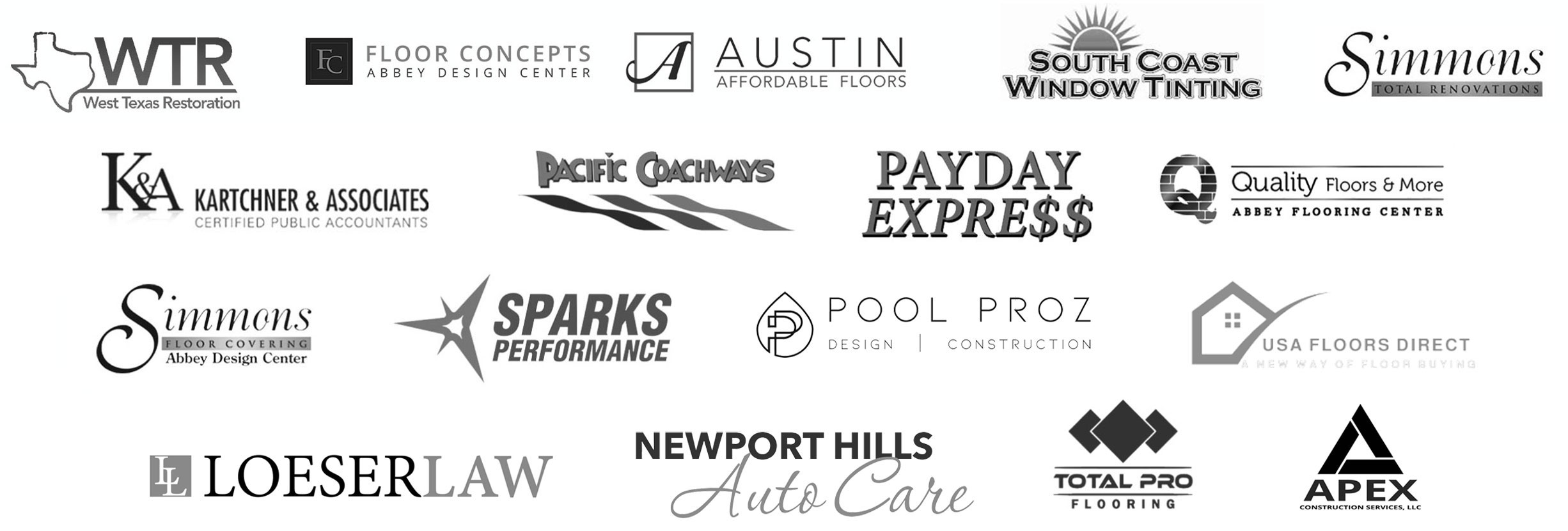Automotive Industry Marketing Experts For Over 50 Years!
At Kartchner Marketing Consulting our team of industry-focused marketing professionals delivers cutting-edge strategies designed to boost your brand’s visibility, drive more traffic, and convert leads into loyal customers.
Marketing Programs Starting At $500/Month | Schedule Your Free Website & Marketing Analysis Today – >

We’re Here To Help You Grow Your Auto Business…
Our marketing model is a proven lead generator for new business in both B2B and B2C automotive business channels and is also scalable to local or national audiences. Whether you’re a local dealership, auto repair business, or a national auto body shop chain, we can give you the expertise and competitive advantage you won’t find from other marketing agencies.

1
Free Website & Local Marketing Analysis
2
Custom Built Marketing Programs
3
AdWords, SEO, Social & Email Strategy
4
Launch & Track Marketing Campaigns
5
Review, Analyze, Modify Each Campaign
6
Ongoing Campaign Strategy Updates
What Our Clients Are Saying...

The team at Kartchner Marketing & Consulting Group designed and built our custom website and social marketing pages for our Automotive Repair & Classic Car business back in 2015. Their marketing strategies helped us grow each year keeping us competitive and giving us a great ROI.
Al Sparks &
Chris Schmidt - Owners
Sparks Performance

Ron and his team at Kartchner Marketing & Consulting Group have been managing our digital marketing campaigns for several years. They have successfully worked as an extension of our team and we are very pleased at their service and results. They offered us a highly customized marketing package completely designed around our business and objectives. We highly recommend Ron and his team.
Scott G. - Owner
Simmons Group

Kartchner Marketing & Consulting Group did a great job building our custom website, Google listing pages, and social media campaigns, and has been running our marketing programs for our automotive repair business since 2021. We appreciate their expertise, attention to detail, and great results from their marketing program.
Dave G. - Owner
Newport Hills Auto Care
Satisfied Customers
Combined Years of Experience
Completed Projects
Availability
Our Featured (and Amazing) Clients

Auto Body Shop Client Example Of FAQ’s:
What To Do If You Have Been In An Auto Accident?
If you’re involved in a car accident here are the steps you should follow:
- Ensure Safety: Check for injuries and move to a safe location if possible. Turn on your hazard lights.
- Call Emergency Services: If anyone is injured or if the accident is severe, call 911 for medical assistance and to report the accident.
- Exchange Information: Gather and exchange names, contact information, driver’s license numbers, license plate numbers, and insurance details with the other driver(s).
- Document the Scene: Take photos of the accident scene, vehicle damage, and any relevant traffic signs or signals. Note the time, date, and weather conditions.
- Witnesses: If there are witnesses, ask for their contact information, as they may provide important statements later.
- File a Report: If there are injuries or significant damage, you may need to file a report with the California Highway Patrol or your local police department.
- Notify Your Insurance: Contact your insurance company as soon as possible to report the accident and start the claims process.
- Seek Medical Attention: Even if you don’t feel injured, it’s a good idea to see a doctor. Some injuries may not be immediately apparent.
- Keep Records: Maintain a file of all accident-related documents, including police reports, medical bills, and any correspondence with your insurance company.
- Consult an Attorney: If there are significant damages or disputes about liability, it may be beneficial to consult with a personal injury attorney.
Staying calm and following these steps can help ensure that you handle the situation appropriately.
State Law And My Legal Rights?
If you’ve been in an auto accident in California, you have several rights that are important to understand:
- Right to Medical Attention: You have the right to seek medical care for any injuries sustained in the accident. If emergency services are needed, they should be called immediately.
- Right to Information: You have the right to obtain the other driver’s information, including their name, contact details, insurance information, and vehicle details.
- Right to Document the Scene: You can take photos and notes about the accident scene, vehicle damages, and any contributing factors, such as weather conditions or road signs.
- Right to File a Police Report: You can request that the police respond to the accident scene and file an official report, especially if there are injuries or significant damages.
- Right to Insurance Claims: You have the right to file a claim with your own insurance company and, if applicable, the other driver’s insurance. California follows a “fault” system, meaning the at-fault driver’s insurance is generally responsible for damages.
- Right to Seek Compensation: If you’re injured due to someone else’s negligence, you can pursue compensation for medical bills, lost wages, pain and suffering, and other damages. This may involve negotiating with insurance companies or pursuing a personal injury lawsuit.
- Right to Representation: You have the right to consult with an attorney, especially if there are disputes about liability or significant injuries. An attorney can help you navigate the claims process and protect your rights.
- Right to a Fair Investigation: You have the right to a fair and thorough investigation of the accident by insurance companies or authorities.
- Right to Privacy: You are not obligated to give a recorded statement to the other party’s insurance company without consulting your own insurer or legal counsel.
- Right to Know Your Coverage: You have the right to understand your own insurance policy and what coverages you have, such as liability, collision, and uninsured/underinsured motorist coverage.
Understanding these rights can help you take the appropriate steps after an accident and ensure you receive the compensation and care you deserve.
How To Select The Right Auto Body Shop?
Selecting the right body shop after an auto accident is crucial for ensuring your vehicle is repaired properly and safely. Here are some tips to help you choose:
- Get Recommendations: Ask friends, family, or coworkers for recommendations. You can also check online reviews on platforms like Google, Yelp, or Facebook.
- Check Certifications: Look for shops that are certified by reputable organizations, such as the Institute of Automotive Service Excellence (ASE) or those that meet manufacturer standards.
- Visit the Shop: If possible, visit the shop in person. Assess the cleanliness, organization, and professionalism of the staff. A well-maintained facility often reflects quality work.
- Ask About Experience: Inquire about the shop’s experience with your specific make and model of vehicle, especially if it has specialized features.
- Get Estimates: Obtain written estimates from multiple shops. This will give you a sense of the average cost and help you identify any outliers.
- Inquire About Warranties: Ask about warranties on both parts and labor. A reputable shop should offer a warranty that covers their work.
- Check Insurance Relationships: Some shops work closely with insurance companies. Inquire whether they can assist with the claims process, but remember you can choose any shop you prefer.
- Ask About Parts Used: Clarify whether they use OEM (Original Equipment Manufacturer) parts, aftermarket parts, or used parts. OEM parts are generally recommended for quality and fit.
- Look for Customer Service: Pay attention to how the staff communicate with you. A shop that prioritizes customer service will keep you informed throughout the repair process.
- Check for Online Presence: A professional website can indicate a well-established business. Look for details about their services, certifications, and customer testimonials.
- Read the Fine Print: Before authorizing any repairs, review the estimate carefully, including the terms and conditions related to repairs, parts, and warranties.
Taking the time to choose the right body shop can make a significant difference in the quality of repairs and your overall satisfaction.
Understanding Your Deductible And Insurance Coverage?
Understanding your auto insurance deductible and coverage is essential for making informed decisions about your policy and managing your finances after an accident. Here’s a breakdown of these concepts:
Auto Insurance Deductible
- What is a Deductible?
A deductible is the amount you pay out of pocket for covered damages before your insurance kicks in. For example, if you have a $500 deductible and incur $2,000 in damages, you’ll pay $500, and your insurance will cover the remaining $1,500. - Types of Deductibles:
- Collision Coverage Deductible: Applies if you’re in an accident, regardless of fault.
- Comprehensive Coverage Deductible: Applies to non-collision incidents (e.g., theft, vandalism, natural disasters).
- Choosing Your Deductible:
- Higher Deductible: Lower monthly premiums, but more out-of-pocket costs if you file a claim.
- Lower Deductible: Higher monthly premiums, but lower out-of-pocket costs during a claim.
- Impacts on Premiums:
Increasing your deductible usually reduces your premium. It’s essential to choose a deductible that you can afford to pay in case of a claim.
Auto Insurance Coverage
- Types of Coverage:
- Liability Coverage: Covers damages to others and their property if you’re at fault in an accident. It includes:
- Bodily Injury Liability: Covers medical expenses for injuries to others.
- Property Damage Liability: Covers damage to others’ property.
- Collision Coverage: Covers damages to your vehicle after an accident, regardless of fault.
- Comprehensive Coverage: Covers non-collision-related damages, such as theft, fire, or natural disasters.
- Uninsured/Underinsured Motorist Coverage: Protects you if you’re in an accident with someone who lacks sufficient insurance.
- Medical Payments (MedPay) or Personal Injury Protection (PIP): Covers medical expenses for you and your passengers, regardless of fault.
- State Requirements:
California, for instance, requires drivers to have minimum liability coverage. Make sure your policy meets or exceeds your state’s requirements. - Reviewing Your Coverage Needs:
Consider factors like your vehicle’s value, your driving habits, and your financial situation when selecting coverage levels. It might be beneficial to have higher coverage limits if you own a newer or more valuable vehicle. - Exclusions and Limitations:
Always read the policy to understand what is not covered, such as certain types of damage, activities, or situations (e.g., using your vehicle for business without proper coverage).
Tips for Managing Your Coverage
- Regularly Review Your Policy: Your needs may change over time, so reassess your coverage at least annually or after significant life events (like moving or changing jobs).
- Consider Bundling: If you have other insurance (like home or renters), bundling can often lead to discounts.
- Ask About Discounts: Many insurers offer discounts for safe driving, multiple vehicles, good student status, or low mileage.
Understanding these aspects of your auto insurance can help you make better choices that align with your financial and coverage needs.
Auto Body Repair Shops & Auto Insurance?
1. Choosing a Repair Shop
- Insurance Recommendations: Your insurance company may recommend specific body shops, often referred to as “preferred” or “network” shops. While these shops may provide quality service, you are not obligated to use them. You have the right to choose any licensed repair shop.
- Independent Research: Research shops independently. Look for customer reviews, certifications (like ASE), and ask for recommendations from friends or family.
2. Understanding Coverage and Claims
- Coverage Types: Your auto insurance policy may include collision and comprehensive coverage, which can pay for repairs after an accident. Review your policy to understand what is covered and any deductibles you’ll need to pay.
- Claims Process: After an accident, report the incident to your insurance company. They will guide you through the claims process, including how to select a repair shop and what documentation is needed.
3. Repair Estimates
- Written Estimates: Get a written estimate from the repair shop. This should outline the necessary repairs and associated costs. Some insurance companies may require this estimate before approving a claim.
- Adjuster’s Inspection: Your insurance may send an adjuster to inspect the damages. They will assess the repair needs and may work with the repair shop to finalize costs.
4. Understanding Your Rights
- Right to Choose: You have the right to choose where to get your vehicle repaired. If your insurance company pressures you to use a specific shop, ask them to clarify your options.
- Quality of Repairs: You have the right to expect quality repairs. Reputable shops should guarantee their work, so inquire about warranties on parts and labor.
5. Communication with Your Insurance and Repair Shop
- Stay Informed: Maintain open communication with both your insurance adjuster and the repair shop. Regular updates can help you understand the progress and any potential issues.
- Documentation: Keep records of all communications, estimates, and repair work. This documentation can be crucial if there are disputes regarding coverage or repair quality.
6. Finalizing the Claim
- Inspection After Repairs: Once repairs are complete, inspect your vehicle to ensure all work meets your expectations. If any issues arise, address them with the repair shop immediately.
- Payment Process: Typically, the repair shop will bill your insurance directly for covered repairs. However, you may need to pay your deductible upfront. Be sure to understand how payments are handled.
7. Additional Considerations
- Total Loss Situations: If the cost of repairs exceeds your vehicle’s value, your insurer may declare it a total loss. Understand how this affects your claim and any payouts you may receive.
- Dispute Resolution: If you disagree with your insurance company or the repair shop about costs or coverage, don’t hesitate to seek assistance from a consumer advocate or attorney.
Understanding these aspects can empower you to make informed decisions throughout the repair and insurance claims process.
What Does A Quality Auto Body Repair Include?
A quality auto body repair includes several key components to ensure that your vehicle is restored to its pre-accident condition, both in appearance and functionality. Here are the main elements:
- Comprehensive Damage Assessment
- Initial Inspection: A thorough assessment of all visible and hidden damages, including structural integrity and mechanical components.
- Detailed Estimates: Providing a detailed written estimate that outlines the necessary repairs, parts, labor, and costs.
- Proper Repair Techniques
- Frame Alignment: If applicable, using specialized equipment to realign the vehicle’s frame to manufacturer specifications.
- Panel Replacement or Repair: Expertly repairing damaged panels or replacing them with high-quality parts, preferably OEM (Original Equipment Manufacturer) parts.
- Quality Materials
- Use of Quality Parts: Sourcing high-quality replacement parts that meet safety and performance standards.
- Paint and Finish: Using high-grade paint that matches the original color and finish, along with proper techniques to achieve a seamless blend.
- Skilled Labor
- Experienced Technicians: Employing certified and experienced technicians who are skilled in various repair techniques and knowledgeable about different vehicle makes and models.
- Safety Standards Compliance
- Adherence to Safety Standards: Ensuring that all repairs comply with safety regulations and manufacturer guidelines, including safety systems and features.
- Paint and Finish Process
- Surface Preparation: Properly preparing the surface by cleaning, sanding, and priming before painting.
- Clear Coating: Applying a protective clear coat to enhance durability and shine.
- Quality Control Checks
- Post-Repair Inspections: Conducting thorough inspections after repairs to ensure everything is functioning correctly and meets quality standards.
- Test Drives: Performing test drives to check for any mechanical issues or handling problems.
- Warranty on Repairs
- Work Warranty: Offering a warranty on both parts and labor, indicating confidence in the quality of the work and providing peace of mind to the customer.
- Customer Communication
- Clear Communication: Keeping the customer informed throughout the repair process regarding progress, delays, and any changes in estimates.
- Final Walkthrough: Providing a final walkthrough of the repairs completed and addressing any customer questions or concerns.
- Documentation
- Record Keeping: Providing all necessary documentation, including repair invoices, parts receipts, and warranty information for future reference.
Conclusion
A quality auto body repair shop not only focuses on restoring the vehicle’s appearance but also prioritizes safety and functionality, ensuring that the car operates as it should post-repair. Selecting a reputable shop that adheres to these standards can make a significant difference in the outcome of your repairs.
